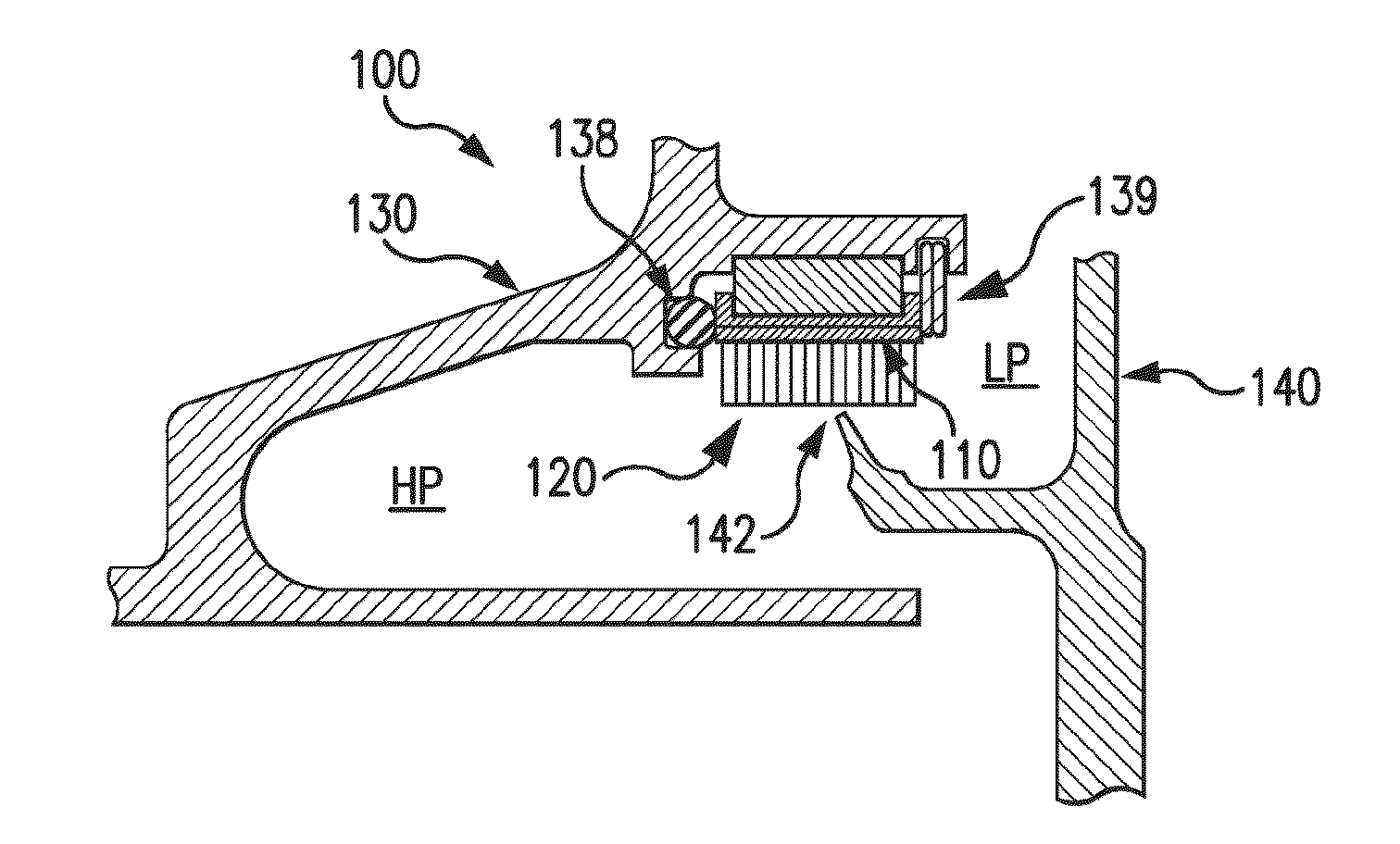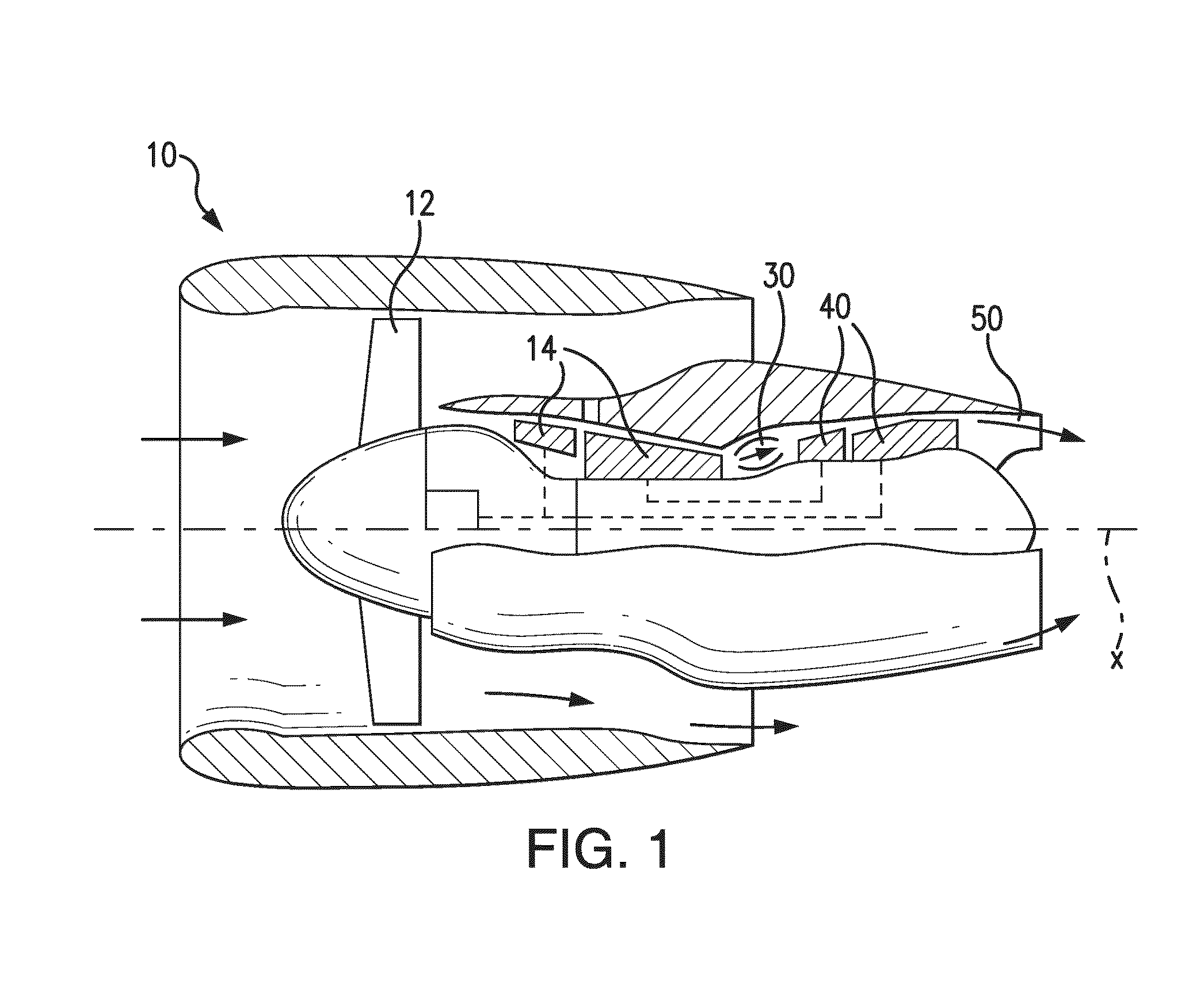Splined honeycomb seals
a honeycomb seal and spline technology, applied in the field of sealing, can solve the problems of limited ability of the seal to minimize leakage by maximizing rub depth and/or minimizing the gap, negative effect of secondary flow into the gas path of the turbine, and affecting the performance, efficiency and component life of the engine, so as to increase the temperature of the knife edge seal and honeycomb seal, increase the sealing engagement, and increase the sealing engagement
- Summary
- Abstract
- Description
- Claims
- Application Information
AI Technical Summary
Benefits of technology
Problems solved by technology
Method used
Image
Examples
Embodiment Construction
[0020]Reference will now be made to the drawings wherein like reference numerals identify similar structural features or aspects of the subject disclosure. For purposes of explanation and illustration, and not limitation, a partial view of an exemplary embodiment of the seal assembly in accordance with the disclosure is shown in FIG. 2 and is designated generally by reference character 100. Other embodiments of seal assemblies in accordance with the disclosure, or aspects thereof, are provided in FIGS. 1 and 3-5, as will be described. The systems and methods described herein can be used to provide sealing in thermal expansion and contraction environments such as in sealing between chambers in gas turbine engines.
[0021]FIG. 1 schematically illustrates an example of a gas turbine engine 10 including a fan section 12, a compressor section 14, a combustor section 30, and a turbine section 40. The gas turbine engine 10 is circumferentially disposed about an engine centerline X. During op...
PUM
 Login to View More
Login to View More Abstract
Description
Claims
Application Information
 Login to View More
Login to View More - R&D
- Intellectual Property
- Life Sciences
- Materials
- Tech Scout
- Unparalleled Data Quality
- Higher Quality Content
- 60% Fewer Hallucinations
Browse by: Latest US Patents, China's latest patents, Technical Efficacy Thesaurus, Application Domain, Technology Topic, Popular Technical Reports.
© 2025 PatSnap. All rights reserved.Legal|Privacy policy|Modern Slavery Act Transparency Statement|Sitemap|About US| Contact US: help@patsnap.com



